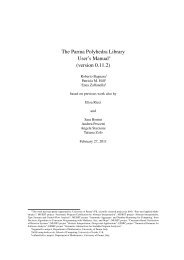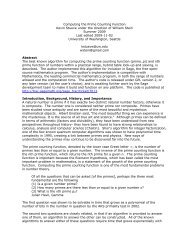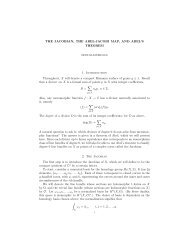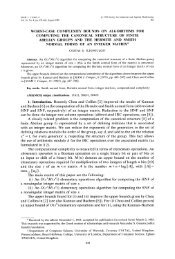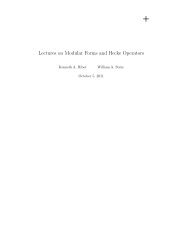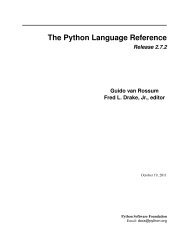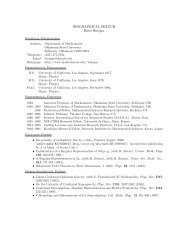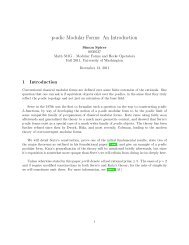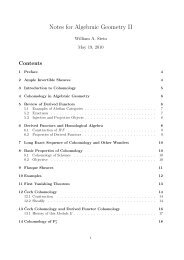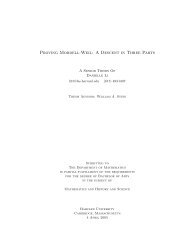Introductory Differential Equations using Sage - William Stein
Introductory Differential Equations using Sage - William Stein
Introductory Differential Equations using Sage - William Stein
You also want an ePaper? Increase the reach of your titles
YUMPU automatically turns print PDFs into web optimized ePapers that Google loves.
1.7. NUMERICAL SOLUTIONS II - RUNGE-KUTTA AND OTHER METHODS 43<br />
The plot of the approximation to x(t) is given in Figure 1.14.<br />
Figure 1.14: Euler’s method with h = 1/3 for x ′′ − 3x ′ + 2x = 1, x(0) = 0, x ′ (0) = 1.<br />
Exercise: Use <strong>Sage</strong> and Euler’s method with h = 1/3 for the following problems:<br />
1. (a) Use Euler’s method to estimate x(1) if x(0) = 1 and dx<br />
dt = x + t2 , <strong>using</strong> 1,2, and<br />
4 steps.<br />
(b) Find the exact value of x(1) by solving the ODE (it is a linear ODE).<br />
2. Find the approximate values of x(1) and y(1) where<br />
{ x ′ = x + y + t, x(0) = 0,<br />
y ′ = x − y, y(0) = 0,<br />
3. Find the approximate value of x(1) where x ′ = x 2 + t 2 , x(0) = 1.<br />
1.7 Numerical solutions II - Runge-Kutta and other methods<br />
The methods of 1.6 are sufficient for computing the solutions of many problems, but often<br />
we are given difficult cases that require more sophisticated methods. One class of methods<br />
are called the Runge-Kutta methods, particularly the fourth-order method of that class<br />
since it achieves a popular balance of efficiency and simplicity. Another class, the multistep<br />
methods, use information from some number m of previous steps. Within that class, we<br />
will briefly describe the Adams-Bashforth method. Finally, we will say a little bit about<br />
adaptive step sizes - i.e. changing h adaptively depending on some local estimate of the<br />
error.



